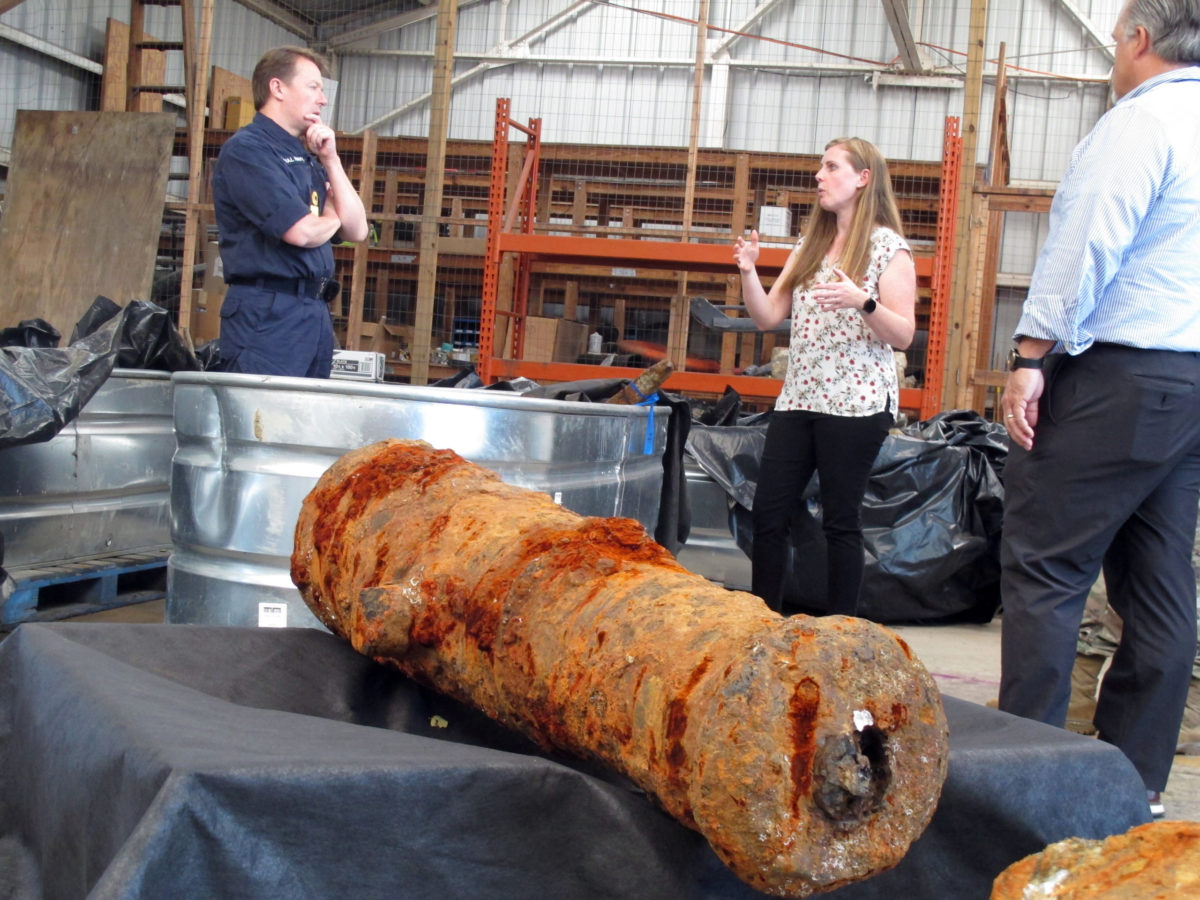American and British troops facing off against each other at Savannah, Georgia, in 1779 amid the fire and fury of the Revolutionary War would probably never have expected that someday their nations would be politely negotiating over the ownership of some lost cannons — yet that is exactly what has happened following the amazing discovery of a bevy of naval guns sunk in the Savannah River.
The U.S Army Corps of Engineers discovered a total of 19 18th-century cannons in Georgia’s Savannah River during a dredging project to deepen the river’s shipping channel — and the U.K., the U.S. federal government and the state of Georgia have yet to determine who owns them.
“They’re in remarkably good shape,” Andrea Farmer, an archaeologist for the Army Corps of Engineers, told NPR. “Many were buried in clay and covered by silt and debris that kind of protected them.”
Engineers working to to deepen a 40-mile sector of the river pulled up the first cannon unexpectedly in February 2021. After the engineers found three additional cannons, divers and sonar equipment probed the waters to provide a more delicate means of recovering historical artifacts. However, environmental conditions complicated the search, and it took more than a year until all the cannons were recovered.
Although the cannons seems to have been manufactured in France, they are believed to have belonged to British warships. Four are 70 inches long, while the others are all about 60 inches long.
Researchers suspected the cannons could be from the HMS Savannah and possibly also the HMS Venus, both purposefully scuttled by the British during the Revolutionary War.
In 1779, the British were in possession of Savannah when an allied force of French and Americans sought to wrest the city from their hands. Sighting the approach of French warships, the British scuttled their own ships to block the enemy’s approach to the city via the river. The Siege of Savannah, which followed soon after, was one of the bloodiest engagements of the Revolutionary War — and a loss for the Americans. The firmly entrenched British troops could not be budged from the city, and despite gallant efforts, the Americans and their allies were forced to withdraw, having lost an estimated 1,000 men, in contrast to the 150 casualties sustained by British forces. Savannah remained under British control for the duration of the war.
The British government, U.S. federal government and the state of Georgia are all interested in laying claim to the cannons, according to the New York Times. Commodore Philip Nash of the British Royal Navy recently examined the recovered cannons. Researchers say they are working to establish a firmer link between the cannons and Great Britain. If more evidence surfaces to prove the cannons indeed belonged to British warships, the British government could attempt to claim ownership.
Although it is not clear who will ultimately legally own the artifacts, all parties agree that the cannons should be displayed in Savannah and are working on an agreement to exhibit them at the Savannah History Museum, according to reports.





